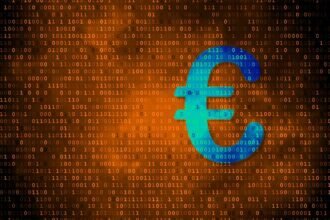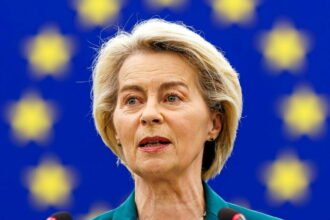NEW YORK, Aug 29 (Reuters) – The U.S. dollar rose for a second straight session on Thursday after data showed the world’s largest economy grew a little faster than expected in the second quarter, modestly reducing expectations for a larger 50 basis-point (bp) rate cut next month by the Federal Reserve.
The report also added to growing expectations that the United States could avoid recession altogether, or go through just a mild one, analysts said.
Following the U.S. data, the dollar rose to a one-week high against the yen to 145.55 and was last up 0.1% at 144.77 yen. The dollar/yen pair is the most sensitive to economic expectations, typically moving in tandem with U.S. Treasury two-year yields.
Against the euro, the dollar gained, with the single European currency falling 0.4% to $1.1077 . On the week, the euro has so far fallen 1.04%, the biggest weekly decline since early April.

In a separate report, jobless claims fell by 2,000 to a seasonally adjusted 231,000 for the week ended Aug. 24. Economists polled by Reuters had forecast 232,000 claims for the week.
The number of people receiving benefits after an initial week of aid, a proxy for hiring, increased by 13,000 to a seasonally adjusted 1.868 million, near the levels seen in late 2021, suggesting persistent unemployment.
“The data so far looks consistent with a 25 basis-point cut, not 50, which has been our view,” said Vassili Serebriakov, FX strategist, at UBS in New York.
U.S. rate futures priced in on Thursday a 35% chance of a 50 bp easing next month, slightly down from Wednesday’s 37% probability, LSEG calculations showed. Markets also factored in about 102 bps of cuts by the end of 2024.
The dollar index advanced 0.3% to 101.35 following the GDP data and jobless claims report. On the week, it has gained 0.6%, on track for its largest weekly rise since early April.
MONTH-END FLOWS
“The dollar has been better bid…due to month-end flows. We’ll likely see a continuation of that,” said Brad Bechtel, global head of FX, at Jefferies in New York.
“The dollar index has been oversold when it was down below 101. I would expect we would migrate back to the 103-104 area. But the labor market report will be critical for that.”
As the month-end approaches, investors tend to square up positions, such that when an asset has been sold off for the month like the dollar, they would normally buy it back to balance their books or portfolios.
In August, the dollar has lost 2.7% of its value, on pace for its largest monthly fall since November 2023.
“We’ve had a sense that the dollar’s selloff has been overextended…and the reasons are understandable given that the Fed is getting close to cuts,” said UBS’ Serebriakov.
Investors now await Friday’s release of the U.S. core personal consumption expenditures (PCE) price index, the Fed’s preferred inflation gauge, which could provide more clues on the size of the rate cut in September, including the pace of the incoming easing cycle.
In the euro zone, the euro fell to a 10-day low of $1.1059, after hitting a 13-month high on Friday of $1.1201. The euro was undermined overall by inflation data from Germany and Spain, which raised bets on the European Central Bank’s rate easing outlook.
Money markets priced in 67 bps of ECB cuts in 2024 , from around 63 bps before the data.

Sign up here.
Reporting by Gertrude Chavez-Dreyfuss; Additional reporting by Stefano Rebaudo in Milan;Editing by Marguerita Choy and Sharon Singleton
Our Standards: The Thomson Reuters Trust Principles.




















